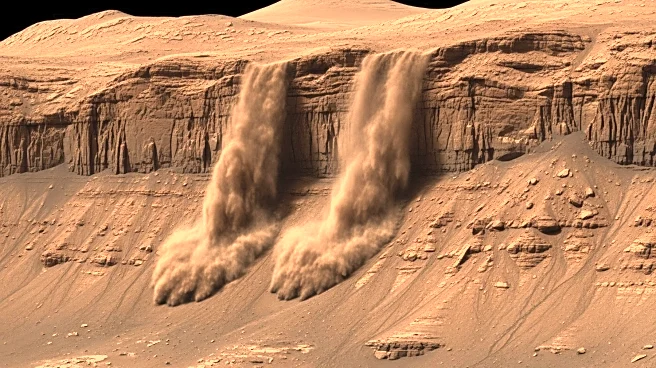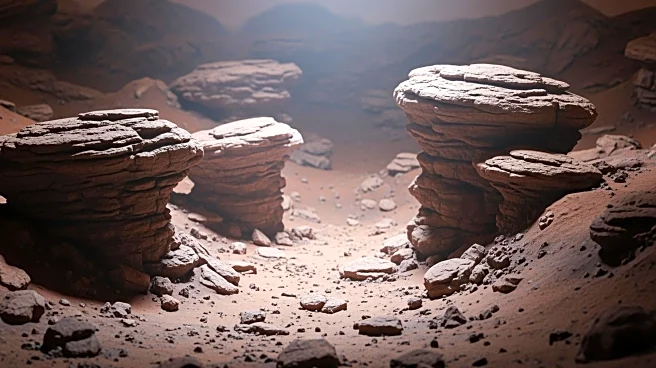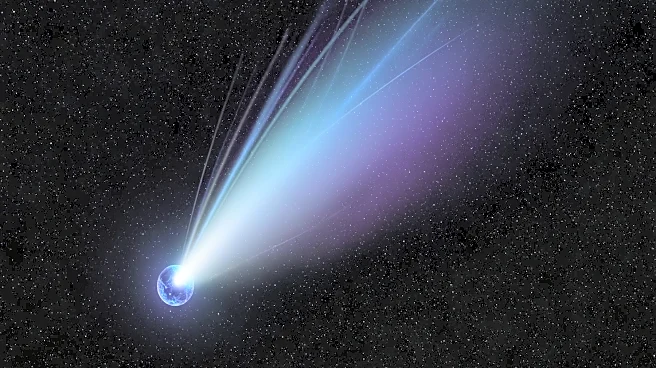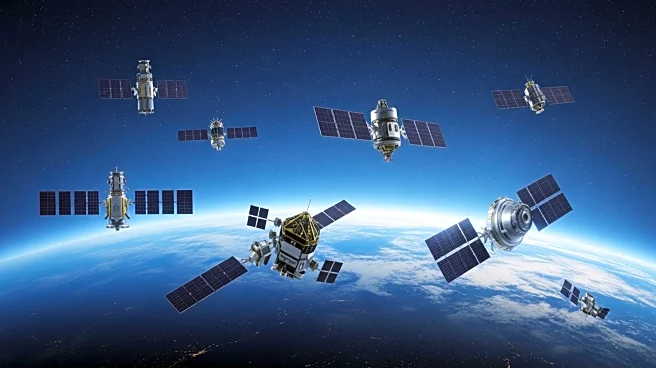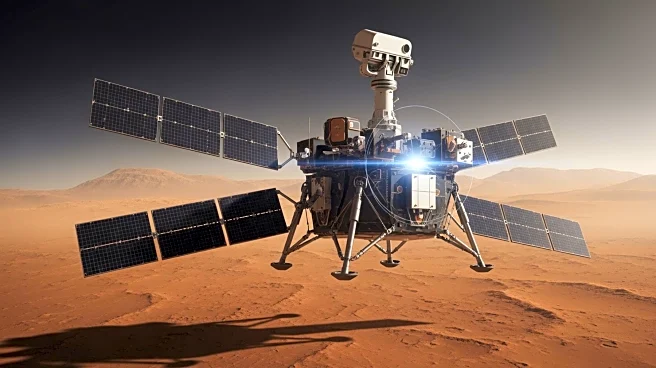What's Happening?
The European Space Agency's ExoMars Trace Gas Orbiter has captured images of dust avalanches on the slopes of Apollinaris Mons on Mars. These events were triggered by a meteoroid impact, which carved numerous
new streaks on the Martian surface. The Colour and Stereo Surface Imaging System (CaSSIS) onboard the orbiter recorded these phenomena on December 24, 2023. The images reveal a cluster of impact craters and streaks formed between 2013 and 2017. Scientists have determined that these streaks are primarily caused by dry processes such as wind and dust activity, rather than water. A study published in Nature Communications highlights that fewer than one in a thousand streaks are due to meteoroid impacts, with most being attributed to seasonal dust and wind dynamics.
Why It's Important?
This discovery is significant as it enhances the understanding of Martian surface dynamics and the role of environmental factors in shaping the planet's landscape. The findings suggest that dust, wind, and sand are the primary drivers of slope streak formation, rather than meteoroid impacts or quakes. This insight is crucial for future Mars exploration missions, as it provides a clearer picture of the planet's current geological activity. The research also contributes to the broader goal of understanding Mars' ancient past and its potential habitability, which is central to the objectives of the ExoMars missions. By mapping atmospheric gases and water-rich locations, the orbiter aids in assessing the planet's history of water and its implications for past life.
What's Next?
The ExoMars Trace Gas Orbiter will continue to monitor Mars, providing long-term, continuous, and global-scale observations. These efforts aim to reveal more about the dynamic processes occurring on Mars today. The data collected will support future missions by offering insights into the planet's geological and atmospheric conditions. Scientists will use this information to refine models of Martian surface activity and to plan for potential human exploration. The ongoing research will also focus on identifying water-rich areas, which are critical for understanding the planet's habitability and for supporting future manned missions.
Beyond the Headlines
The study of Martian dust avalanches has broader implications for planetary science, as it challenges previous assumptions about the role of water in shaping the Martian landscape. The findings emphasize the importance of dry processes in planetary geology, which could influence the study of other celestial bodies with similar conditions. Additionally, the use of deep learning algorithms to analyze vast datasets from Mars orbiters represents a significant advancement in space exploration technology. This approach allows for more efficient and comprehensive analysis of planetary surfaces, paving the way for future discoveries.
